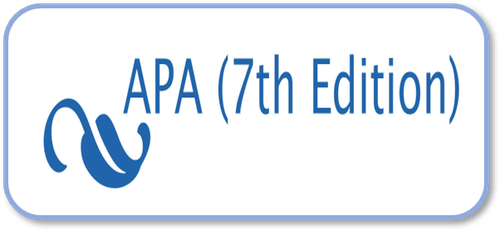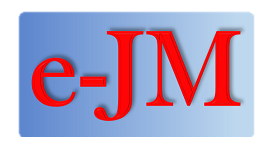The Impactof Novelty And Meaningfulness Creative Marketing Programon Hotel Performance
DOI:
https://doi.org/10.24912/jm.v24i3.672Abstract
At present, the hotel business is dealing with increasingly competitive competition. Creative marketing methods are developed to anticipate the competition. The implementation of creative marketing programs is a form of new strategies in the hotel industry. This study aims to prove the impact of the novelty and meaningfulness of creative marketing programs on hotel performance. The study is conducted with quantitative methods using primary data through a survey of owners/hotel general managers in Palembang city. A total of 75 questionnaires are distributed to the owners/hotel general managers. The number of questionnaires used in this study is 65 (87%). Structural Equation Modeling (SEM) Partial Least Squares (PLS) analysis using Warp PLS version 5.0 software is used to test of hypothesis. The results of the study indicate that the novelty and meaningfulness creative marketing program has a positive effect on the hotel's performance in Palembang city.
References
Abdullah, M. D. F., Ardiansah, M. N., and Hamidah, N. (2017). The effect of company size, company age, public ownership and audit quality on internet financial reporting. Sriwijaya International Journal of Dynamic Economics and Business, 1(12), 153–166.
Altin, M., Koseoglu, M., Yu, X., and Riasi, A. (2018). Performance measurement and management research in the hospitality and tourism industry. International Journal of Contemporary Hospitality Management, 30(2), 1172–1189.
Amabile, T. M., and Pratt, M. G. (2016). The dynamic componential model of creativity and innovation in organizations: Making progress, making meaning. Research in Organizational Behavior, 36(1), 157–183.
Andrews, J. (1996). Creative ideas take time: Business practices that help product managers cope with time pressure. Journal of Product & Brand Management, 5(1), 6–18.
Andrews, J., and Smith, D. C. (1996). In search of the marketing imagination: Factors affecting the creativity of marketing programs for mature products. Journal of Marketing Research, 33(2), 174–187.
Anonymous. 2019a. OYO tumbuh 200 persen di Palembang. https://rmco.id/baca-berita/ekonomi-bisnis/18676/oyo-tumbuh-200-persen-di-palembang.
Anonymous. 2019b. Industri perhotelan di Palembang diproyeksi cerah. https://www.medcom.id/ekonomi/mikro/ob3xLOyk-industri-perhotelan-di-palembang-diproyeksi-cerah.
Blal, I., Singal, M., and Templin, J. (2018). No Airbnb’s effect on hotel sales growth. International Journal of Hospitality Management, 73, 85–92.
Cantallops, A. ., and Salvi, F. (2014). New consumer behavior: a review of research on eWOM and hotels. International Journal of Hospitality Management, 36, 41–51.
Dabrowski, D., Brzozowska-Woś, M., Gołąb-Andrzejak, E., and Firgolska, A. (2019). Market orientation and hotel performance: The mediating effect of creative marketing programs. Journal of Hospitality and Tourism Management, 41, 175–183.
Fillis, I. (2020). Being Creative at the Marketing/Entrepreneurship Interface: Lessons from the Art Industry. Journal of Research in Marketing & Entrepreneurship, 2(2), 125–137.
Grissemann, U., Plank, A., and Brunner-Sperdin, A. (2013). Enhancing business performance of hotels: The role of innovation and customer orientation. International Journal of Hospitality Management, 33, 347–356.
Hair, J. F., Hult, G. T. M., Ringle, C. M., and Sartsedt, M. (2013). A prime on partial least squares stuctural equation modeling (PLS-SEM). Sage.
Hassan, M. U., U, Q. S., Sharif, S., and Mukhtar, A. (2013). Impact of marketing strategy creativity on organizational performance via marketing strategy implementation effectiveness: Empirical evidence from pakistani organizations. Middle-East Journal of Scientific Research, 16(2), 164–273.
Im, S., and Workman, J. P. (2016). Market orientation, creativity, and new roduct performance in high-technology firms. Journal of Marketing, 68, 114–132.
Ishaq, M. I., and Hussain, N. M. (2016). Creative marketing strategy and effective execution on performance in Pakistan. Revista de Administração de Empresas, 56(6), 668–679.
Ittner, C. D., and Larcker, D. F. (2003). Coming up short on non financial performance measurement. Harvard Business Review, November, 88–95.
Kang, S., Hur, W. M., and Kim, M. (2014). The mediating role of alliance marketing program creativity on the relationship between alliance orientation and market performance in the services industry. Managing Service Quality, 24(5), 522–540.
Khmiadashvili, L. (2019). Digital marketing strategy based on hotel strategy studi in Tbilisi. International E-Journal of Advances in Social Sciences, 5(14), 922–927.
Kock, N. (2011). Using WrapPLS in e-collaboration studies: Descriptive statistics, settings, and key analysis results. International Journal of E-Collaboration, 7(2), 1–18.
Law, R., Qi, S., and Buhalis, D. (2010). Progress in tourism management: a review ofwebsite evaluation in tourism research. Tourism Management, 31(3), 297–313.
Lee, C. L., and Yang, H. J. (2011). Organization structure, competition and performance measurement system and their joint effect on performance. Management Accounting Research, 22(2), 84–104.
Lee, P. Y., and Lau, K. W. (2018). From an “idea generator” to a “solution facilitator”: A study of the changing roles of advertising professionals in the social media marketing era. Career Development International, 24(1), 2–17.
Levy, S. ., Duan, W., and Boo, S. (2013). An analysis of one-star online reviews and responses in the Washington, D.C. lodging market. Cornell Hospitality Quarterly, 54(1), 49–63.
Lien, C. H., Wen, M. J., and Wu, K. L. (2015). Online hotel booking: The effects of brand image, price, trust and value on purchase intentions. Asia Pacific Management Review, 20(4), 71–83.
Liu, J. N. K., and Zhang, E. Y. (2014). An investigation of factors affecting customer selection of online hotelbooking channels. International Journal of Hospitality Management, 39, 71–83.
Melo, A. J., Hernández-Maestro, R. M., and Muñoz-Gallego, P. A. (2017). Service quality perceptions, online visibility, and business performance in rural lodging establishments. Journal of Travel Research, 56(2), 250–262.
Naeem, B., Nawaz, M. M., Rana, A. A., and Ishaq, M. I. (2011). Do creative marketing strategy and its effective execution promote business performance? An empirical assessment. African Journal of Business Management, 5(30), 1208–12223.
Narsa, I. M., and Pratiwi, F. F. (2014). Internet financial reporting dan faktor-Faktor yang Mempengaruhinya pada pemerintah kota dan kabupaten di Indonesia. Ekuitas: Jurnal Ekonomi Dan Keuangan, 18(2), 259–273.
Nosihana, A., dan Yaya, R. (2016). Internet financial reporting dan faktor-Faktor yang Mempengaruhinya pada pemerintah kota dan kabupaten di Indonesia. Jurnal Dinamika Akuntansi Dan Bisnis, 3(2), 89–104.
Pan, B., Zhang, L., and Law, R. (2013). The complex matter of online hotel choice. International Journal of Hospitality Management, 54(1), 74–83.
Pelsmacker, P. D., Tilburg, S., and C, H. (2018). Digital marketing strategies, online reviews and hotel performance. International Journal of Hospitality Management, 72, 47–55.
Pitta, D. A., Wood, V. R., and Franzak, F. J. (2008). Nurturing an effective creative culture within a marketing organization. Journal of Consumer Marketing, 25(3), 137–148.
Rendon, O. H., Martinez, R. M., and Flores, M. S. (2014). Marketing Strategies for Hotel Industry Internationalization in Morelia. Procedia - Social and Behavioral Sciences, 148, 271–279.
Sainaghi, R. (2010). Hotel performance: state of the art. International Journal of Contemporary Hospitality Management, 22(7), 920–952.
Saud, I. M., B, A., dan Nugraheni, P. (2019). Analsis pengungkapan internet financial reporting perusahaan asuransi-perbankan syariah di Indonesia-Malaysia. Jurnal Media Riset Akuntansi, Auditing & Informasi, 19(1), 35–52.
Setiawan, A. S. (2016). Pengaruh pemilihan strategi deferensiasi terhadap kinerja keuangan (Studi empiris pada perusahaan manufaktur food & beverages terdaftar di BEI). Jurnal Akuntansi, 20(1), 104–116.
Setiawan, A. S., dan Rahmawati. (2017). Hubungan rating bintang terhadap peran akuntansi manajemen strategis (Studi empiris pada perusahaan hotel di Sumatera Selatan). Jurnal Akuntansi, 21(1), 114–126.
Setiawan, A. S., Rahmawati, Djuminah, and Widagdo, A. K. (2019a). Owner power, deliberate strategy formulation, and strategic management acounting. Opción, 35(89), 254–270.
Setiawan, A. S., Rahmawati, Djuminah, and Widagdo, A. K. (2019b). The impact of business strategy formulation towards acountant role: Star rating as moderating variable in hotel industry in Southern Sumatera Region. International Journal of Enggineering and Technology, 11(4), 749–755.
Sharma, V. (2014). Creative marketing for small businesses. Journal of Business and Management, 16(7), 69–77.
Siemieniuch, C., and Sinclair, M. (2002). On complexity, process ownership and organizational learning in manufacturing organizations, from an ergonomics perspective. Applied Ergonomics, 33(5), 449–462.
Sigala, M., and Chalkiti, K. (2015). Knowledge management, social media and employee creativity. International Journal of Hospitality Management, 45(1), 44–58.
Slater, S. F., Hult, G. T. M., and Olson, E. M. (2010). Factors influencing the relative importance of marketing strategy creativity and marketing strategy implementation effectiveness. Industrial Marketing Management, 39(4), 551–559.
Terkan, R. (2014). Importance of creative advertising and marketing according to university students’ perspective. International Review of Management and Marketing, 4(3), 239–246.
Wadden, J. D. (2011). Marketing creativity: The influence of personal and proximal work factors on creative activity. Marketing Management Journal, 21(2), 70–80.
Wang, K., and Goldfarb, A. (2017). Can offline stores drive online sales? Journal of Marketing Research, 45(5), 706–719.
Yfantidou, G., Spyridopoulou, E., Chatzigeorgiou, T., and Malliou, P. (2019). Hotel innovation and the creation of competitive advantage. In Katsoni, V & Segarra-Ona M (Eds.). Smart tourism as a driver for culture and sustainability. Springer Proceedings in Business and Economics, 135–144.
Zhou, K. Z., Brown, J. R., Dev, C. S., and Agarwal, S. (2007). The effects of customer and competitor orientations on performance in global markets: A contingency analysis. Journal of International Business Studies, 38(2), 303–319.
Downloads
Published
How to Cite
Issue
Section
License
Copyright (c) 2020 Jurnal Manajemen

This work is licensed under a Creative Commons Attribution-NonCommercial-ShareAlike 4.0 International License.
This journal provides immediate open access to its content on the principle that making research freely available to the public supports a greater global exchange of knowledge.

This work is licensed under a Creative Commons Attribution-NonCommercial-ShareAlike 4.0 International License



















